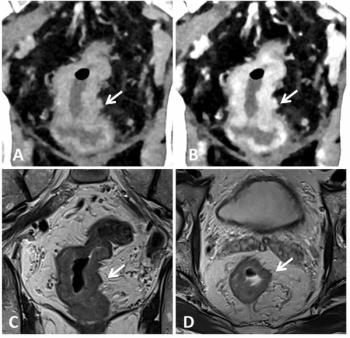
Cardiac MR perfusion -- with some help -- assesses coronaries
MR perfusion imaging, along with intracoronary pressure data, may help identify hemodynamically relevant coronary artery diseases, according to a study presented this week at the North American Society for Cardiac Imaging meeting in Amelia Island, FL.
MR perfusion imaging, along with intracoronary pressure data, may help identify hemodynamically relevant coronary artery diseases, according to a study presented this week at the North American Society for Cardiac Imaging meeting in Amelia Island, FL.
Dr. Armin M. Huber and colleagues from the Klinikum Grosshadern and Klinikum Innenstadt in Munich found that semiquantitative MR perfusion parameters with results from intracoronary pressure-derived fractional flow reserve correctly assessed the hemodynamic relevance of known coronary artery lesions.
Twenty-one patients underwent coronary MR angiography with intracoronary pressure wire examination for determination of fractional flow reserve in 23 stenotic lesions. SI curves of the first-pass MR perfusion imaging (SR-turboFLASH) of the myocardium were analyzed at rest and under adenosine-induced hyperemia.
Researchers determined time-to-peak, maximum signal intensity, and upslope values using a 16-segment model. They divided lesions into three groups:
- normal - those causing more than 50% diameter reduction
- intermediate - those with more than 50% reduction along with a fractional flow reserve greater than 0.75
- severe - those causing a diameter reduction of more than 50% with a fractional flow reserve of less than 0.75
A total of 336 perfusion areas were evaluated. Time-to-peak and upslope at rest values were not significantly different among the three groups. Stress upslope measurements of normal coronary arteries and severe coronary stenoses, however, were significantly different.
The ratio for upslope at stress and rest was 3.4 (2.0-6.3) for normal coronary arteries and 1.7 (1.2-1.7) and 1.1 (1.0-1.3) for intermediate and severe coronary lesions (p
Time-to-peak and upslope at rest measurements were not able to discriminate between normal and severely stenosed coronary arteries, Huber said. Measurements for upslope under stress and the ratio between upslope under stress and upslope at rest were significantly different between normal and significantly functionally diseased coronary arteries.
"The use of these MRI parameters may therefore improve the sensitivity and specificity of noninvasive identification of hemodynamically relevant CAD," he said.
Newsletter
Stay at the forefront of radiology with the Diagnostic Imaging newsletter, delivering the latest news, clinical insights, and imaging advancements for today’s radiologists.



























